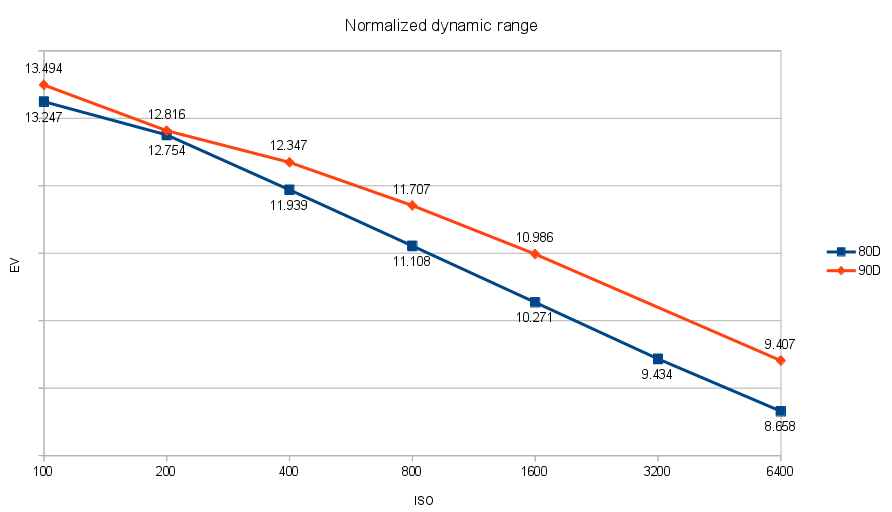Ciriaco Garcia
Forum Enthusiast
Well, there are GREAT news. And since the sensor is far from being ISO-less, and one needs to crank up the ISO to improve the shadows, the new DR at high ISO is very valuable.

The 90 has much better performance at high ISO. To the point that from ISO 1600 it seems nearly an stop ahead of the 80D. That is, the ISO 6400 should look as clean as ISO 3200 on the 80D (ok, in the shadows... in the midtones, physics laws can't make miracles). These are the read noise values:
90D vs 80D:
ISO 100: 2.77497 vs 2.84197
ISO 200: 4.43868 vs 3.99936
ISO 400: 5.55092 vs 6.35349
ISO 800: 8.65067 vs 11.304
ISO 1600: 14.2535 vs 20.1949
ISO 3200: ? vs 36.077
ISO 6400: 42.5752 vs 61.7794
Data comes from both green channels, using the pixels in the masked area. Well, we are not sure if the ISO sensitivity is equal in both cameras, but this is looking very good.
I have retested ISO 200 and 400 since there were two available images on each and the results (read noise 4.40524 and 5.4736) confirm that the DR "dip" at ISO 200 is real. I don't say it has two base ISO settings (another one optimized for high ISO) but this is interesting. I think that other Canon cameras already had this behaviour. The 90D also applies scaling to the red and blue channels (likely white balance correction applied to the raw) as the 5D4 did.
The 90D images come from dpreview's sample gallery and the 80D from these series I had already downloaded on my computer.

The 90 has much better performance at high ISO. To the point that from ISO 1600 it seems nearly an stop ahead of the 80D. That is, the ISO 6400 should look as clean as ISO 3200 on the 80D (ok, in the shadows... in the midtones, physics laws can't make miracles). These are the read noise values:
90D vs 80D:
ISO 100: 2.77497 vs 2.84197
ISO 200: 4.43868 vs 3.99936
ISO 400: 5.55092 vs 6.35349
ISO 800: 8.65067 vs 11.304
ISO 1600: 14.2535 vs 20.1949
ISO 3200: ? vs 36.077
ISO 6400: 42.5752 vs 61.7794
Data comes from both green channels, using the pixels in the masked area. Well, we are not sure if the ISO sensitivity is equal in both cameras, but this is looking very good.
I have retested ISO 200 and 400 since there were two available images on each and the results (read noise 4.40524 and 5.4736) confirm that the DR "dip" at ISO 200 is real. I don't say it has two base ISO settings (another one optimized for high ISO) but this is interesting. I think that other Canon cameras already had this behaviour. The 90D also applies scaling to the red and blue channels (likely white balance correction applied to the raw) as the 5D4 did.
The 90D images come from dpreview's sample gallery and the 80D from these series I had already downloaded on my computer.

